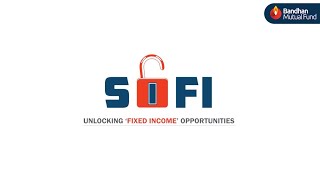Category : Investing Guides January 31, 20245 minutes read
Debt mutual funds are investment options that primarily focus on fixed-income securities such as government bonds, corporate bonds, treasury bills and money market instruments. They are managed by professional fund managers who pool money from investors and allocate it strategically to generate stable returns, largely through interest income. These funds are popular among risk-averse investors as they provide diversification, regular income and liquidity while maintaining a lower risk profile compared to equity funds.
There are different types of debt funds designed to cater to varying investment goals and horizons. For instance, overnight and liquid funds are ideal for very short-term needs, while corporate bond, gilt and credit risk funds suit longer-term investors seeking higher potential returns. Options like dynamic bond funds and floating rate funds allow greater flexibility depending on the interest rate outlook.
While debt funds offer several benefits, including professional management and steady income, they are not entirely risk-free. Investors should be mindful of risks such as interest rate fluctuations, credit risk from issuers, market volatility and liquidity constraints. Choosing the right fund requires assessing one’s financial goals, risk tolerance and investment horizon. Overall, debt mutual funds provide a balanced way to achieve stability, income and diversification within a portfolio.
For different investors, different investment options make sense. For those who want low risk investments, debt mutual funds may be a good option to consider. What are debt mutual funds? They are investment tools that prioritise stability and potential income generation. Debt funds in mutual funds come in various forms to cater to diverse financial goals of investors.
Debt mutual funds have been gaining popularity lately, piquing the interest of both seasoned investors and newcomers to the financial scene. These investment options may have the potential to generate optimal returns, with a wide array of choices tailored to different financial goals and risk tolerances. In this guide, we will dive deeper into what are debt mutual funds, how to invest in debt funds, types of debt funds, and suitable debt funds for long term investment goals.
Debt funds are an investment instrument that primarily invests in fixed-income securities like government bonds, corporate bonds, money market instruments, and other debt-related assets. These funds are managed by professional fund managers who pool investments from various investors and strategically allocate them to generate potential returns primarily through interest income.
How Does a Debt Fund Work?
Debt funds in mutual funds work by accumulating investments from multiple individuals or entities and deploying those funds into a diversified portfolio of debt instruments. The returns generated in debt funds are primarily derived from the interest income earned on the underlying securities. These funds may have the potential to provide optimal returns to investors.
Benefits of Debt Funds
- Regular Income: Debt mutual funds offer regular interest payments to investors, making them an attractive option for those seeking a steady income stream.
- Diversification: Investors benefit from a diversified portfolio, reducing the risk associated with individual bonds.
- Liquidity: Debt funds are generally more liquid than individual bonds, allowing investors to buy or sell units at their convenience.
- Professional Management: Skilled fund managers actively manage the portfolio to maximize potential returns while maintaining a suitable risk profile.
Diversify your investment portfolio by investing in debt funds with Bandhan Mutual Fund.
Risks Associated with Debt Funds
- Interest Rate Risk: Changes in interest rates can impact the value of the fund. When rates rise, bond prices tend to fall, potentially leading to capital losses for investors.
- Credit Risk: There is a risk that the issuer of the bonds held by the fund may default on their interest or principal payments.
- Market Risk: Debt funds are subject to market fluctuations, which can affect their NAV (Net Asset Value).
- Liquidity Risk: If the underlying securities are not easily tradable, the fund may face liquidity issues during redemptions.
How to Invest in Debt Funds?
Now, let’s discuss how to invest in debt funds. Investing in debt funds is straightforward. You can invest in them through asset management companies. Simply create a folio with a fund house, complete the necessary formalities, and choose the debt fund that aligns with your investment goals and risk tolerance. You can invest a lumpsum amount or set up systematic investment plans (SIPs) to invest regularly.
Debt mutual funds are an investment instrument that invest primarily in fixed-income securities like government bonds, corporate bonds, money market instruments and other debt-related assets. Debt funds accumulate investments from multiple individuals or entities and deploy those funds into a diversified portfolio of debt instruments. Some of the benefits of debt funds are the diversification of assets, regular income, liquidity and professional management. However, debt funds are also associated with certain risks, including interest rate risk, credit risk, market risk and liquidity risk.
In this chapter, we will explore various types of debt funds, each offering distinct characteristics and investment objectives. Let’s delve into these types of debt funds and understand their associated risks and benefits.
1. Overnight Fund:
Overnight funds are short-term debt funds. They invest in very short-term debt instruments with a maturity of one day, making them one of the safest debt funds. They offer low risk and high liquidity.
- Risks: There are several short-term funds. These short-term debt funds returns, such as those from overnight funds, may be lower than other debt funds due to their relatively less risky investment approach.
2. Low Duration Fund:
Low duration funds have a slightly longer investment horizon than overnight funds, aiming for potentially better returns while maintaining relative safety.
- Risks: They are still relatively low risk, but these types of debt funds with longer durations can experience more significant interest rate risk.
3. Ultra Short-Term Fund:
Ultra short term funds returns can be higher than overnight funds, while maintaining a focus on short-term investments and low risk.
- Risks: Ultra short debt funds may be slightly less risky than other longer-term options.
4. Money Market Fund:
Money market or money manager funds invest in very short-term, highly liquid instruments, offering relative stability and liquidity.
- Risks: Returns may be lower than other debt mutual funds returns, but they may be suitable option for investors seeking less risky option.
Read more about what money market mutual funds in India are!
5. Corporate Bond Fund:
Corporate bond funds invest primarily in corporate bonds, it may offer potentially higher returns than government securities.
- Risks: Credit risk is one of the major risks associated with corporate bond funds. It means that there is a risk of default by corporate issuers, which can impact returns.
6. Floating Rate Fund:
Floater funds or floating rate funds invest in securities with variable interest rates, providing protection against rising interest rates.
- Risks: Floater fund risk component is that returns may not rise as quickly in falling interest rate scenarios.
7. Short Term Fund:
A short term fund offers a balanced approach between risk and return, making them suitable for investors with a moderate risk tolerance.
- Risks: Short term funds are subject to interest rate risk, but generally lower compared to long-term funds.
8. Medium Term Fund:
Medium term funds aim for higher returns by investing in medium-term debt instruments.
- Risks: Moderate exposure to interest rate risk, which may be suitable for investors with a longer time horizon.
9. Long Term Fund:
Suitable for long-term investors seeking higher returns by investing in longer maturity bonds. These are favourable debt funds for long term goals.
- Risks: More exposed to interest rate fluctuations.
10. Dynamic Bond Fund:
What is the meaning of dynamic bond fund? These funds have the flexibility to adapt to changing market conditions by adjusting the portfolio duration.
- Risks: Higher potential returns come with increased interest rate risk.
Find a suitable debt fund to meet your investment goals at Bandhan Mutual Fund.
11. Credit Risk Fund:
Credit risk funds offer potentially better returns by investing in lower-rated debt instruments.
- Risks: Credit risk implies the risk of default by lower-rated issuers, which can lead to capital losses. This is why credit risk funds are categorised as having moderately high risk.
12. Gilt Fund:
Gilt funds invest in bonds and other government securities, offering potential safety and stability. These are issued by the central and state governments.
- Risks: As gilt funds invest in government securities they have lower credit risk but may have moderate interest rate risk.
In addition to these categories, there are also debt hybrid funds, which combine elements of both equity and debt fund strategies to provide a balanced approach to investors.
There are many different types of debt funds. These funds may have different risks, maturity periods and benefits. The types of debt funds are:
- Overnight Funds
- Low Duration Funds
- Ultra Short-Term Funds
- Money Market Funds
- Corporate Bond Funds
- Floating Rate Funds
- Short-Term Funds
- Medium-Term Funds
- Long-Term Funds
- Dynamic Bond Funds
- Credit Risk Funds
- Gilt Funds
In this chapter, we will discuss the essential points to consider when selecting a debt fund, identify who should invest in debt funds, and provide a step-by-step understanding on what are debt mutual funds and the investment process.
Points to Consider When Choosing a Debt Fund
Understanding what are debt funds and their types is a crucial step in choosing the appropriate fund. However, it is vital to consider other factors.
1. Risk Tolerance
Evaluate your risk tolerance carefully. If you have a low appetite for risk and prioritize capital preservation, consider funds with lower credit risk, such as liquid or overnight funds.
2. Investment Goals
Define your investment goals. Are you looking for regular income, wealth preservation, or capital appreciation? Your goals will determine the type of debt fund that aligns with your objectives.
3. Investment Horizon
Consider your investment horizon. Short-term goals may be best served by ultra-short or low duration funds. Similarly, long term goals can be achieved by investing in medium or long-term funds, corporate bond funds or credit risk funds.
4. Credit Risk Tolerance
Assess your comfort level with credit risk in mutual funds. If you can tolerate some level of risk for potentially higher debt mutual returns, you may explore corporate bond or credit risk funds.
5. Interest Rate Outlook
Keep an eye on the interest rate environment. In a rising rate scenario, consider floating rate or short-term funds to mitigate interest rate risk.
6. Liquidity Needs
Determine your liquidity needs. If you require quick access to your funds, opt for funds that offer high liquidity, such as money market or ultra-short-term funds.
Who Should Invest in Debt Funds?
Debt funds are suitable for a wide range of investors, including:
- Conservative Investors: Those seeking a safe haven for their investments and a regular income stream.
- Short-Term Goal Planners: Individuals with short-term financial goals like building an emergency fund or saving for a down payment.
- Retirees: For retirees looking to generate a steady income during their post-retirement years.
- Risk-Averse Investors: Those who prioritize capital preservation and are not comfortable with the volatility of equity markets.
- Diversified Portfolio Builders: Investors looking to diversify their investment portfolio beyond equities may include debt funds to balance risk.
Find a debt fund that meets your risk appetite and goals!
Step-by-Step Process of Investing in Debt Funds
1. Goal Assessment:
Determine your investment goals and the amount you wish to invest in debt funds. To meet short-term goals, opt for overnight funds, ultra short-term funds or short-term funds. Long-term goals can be met by investing in corporate bond funds, credit risk funds, medium-term funds and long-term funds.
2. Risk Evaluation:
Assess your risk tolerance and select the type of debt fund that aligns with your risk profile. Risk-averse investors can consider investing in short-term funds, liquid funds and money manager funds. Investors with a high-risk appetite can opt for credit risk funds and dynamic bond funds.
3. Fund Selection:
Research and choose a specific debt fund based on your goals, investment horizon, and risk tolerance. For instance, you may have a high-risk appetite but short-term goals. Liquid funds or short-term funds, although not high-risk, may be an appropriate choice.
Read more: How to choose mutual funds
4. Fund House Selection:
Select a reputable mutual fund company or asset management firm offering the chosen debt fund.
5. KYC Compliance:
Ensure you have completed your Know Your Customer (KYC) formalities with the fund house, including providing the necessary documents and details.
6. Investment Amount and Mode:
Decide whether you want to invest a lumpsum or through Systematic Investment Plans (SIPs).
7. Fund Allocation:
Allocate your funds to the chosen debt fund or funds as per your investment strategy.
8. Monitor and Review:
Periodically monitor the performance of your debt fund and make adjustments if necessary to align with your evolving financial goals.
Before investing in any mutual fund investors must consider their risk tolerance, investment goals and investment horizon.Other important factors to consider include interest rate outlook and liquidity needs. Debt funds may be suitable for conservative investors, investors with short-term goals, retirees, risk-averse investors and investors seeking a diversified portfolio. The step-by-step process to invest in debt funds is:
- Goal Assessment
- Risk Evaluation
- Fund Selection
- Fund House Selection
- KYC Compliance
- Investment Amount and Mode
- Fund Allocation
- Monitor and Review of Investments
- Debt funds in mutual funds are investment vehicles primarily focused on fixed-income securities. They provide investors with a means to earn regular income, diversify their portfolio, and benefit from professional management.
- However, it’s essential to be aware of the associated debt fund risks, such as interest rate and credit risk, before investing in these funds.
- Depending on your risk tolerance and investment goals, you can choose from these various types of debt funds to build a diversified portfolio that suits your financial needs. Choosing the right debt fund involves assessing your risk tolerance, goals, and investment horizon.
- Debt funds are suitable for various investors seeking stability, regular income, and capital preservation.
- To invest in these funds, follow a straightforward process, from goal setting to selecting the right fund and monitoring your investments over time.
- Understanding factors like interest rate risk and debt funds returns can help you make informed decisions while building your investment portfolio.










